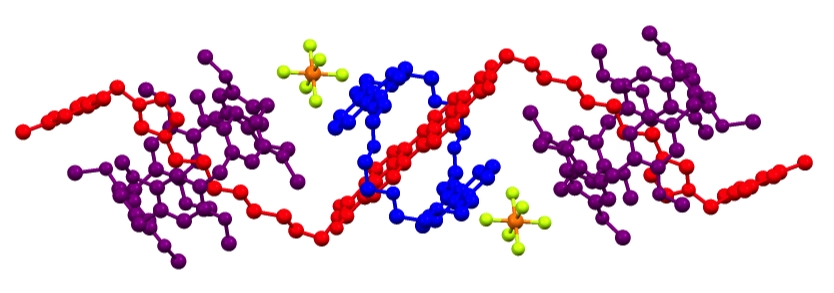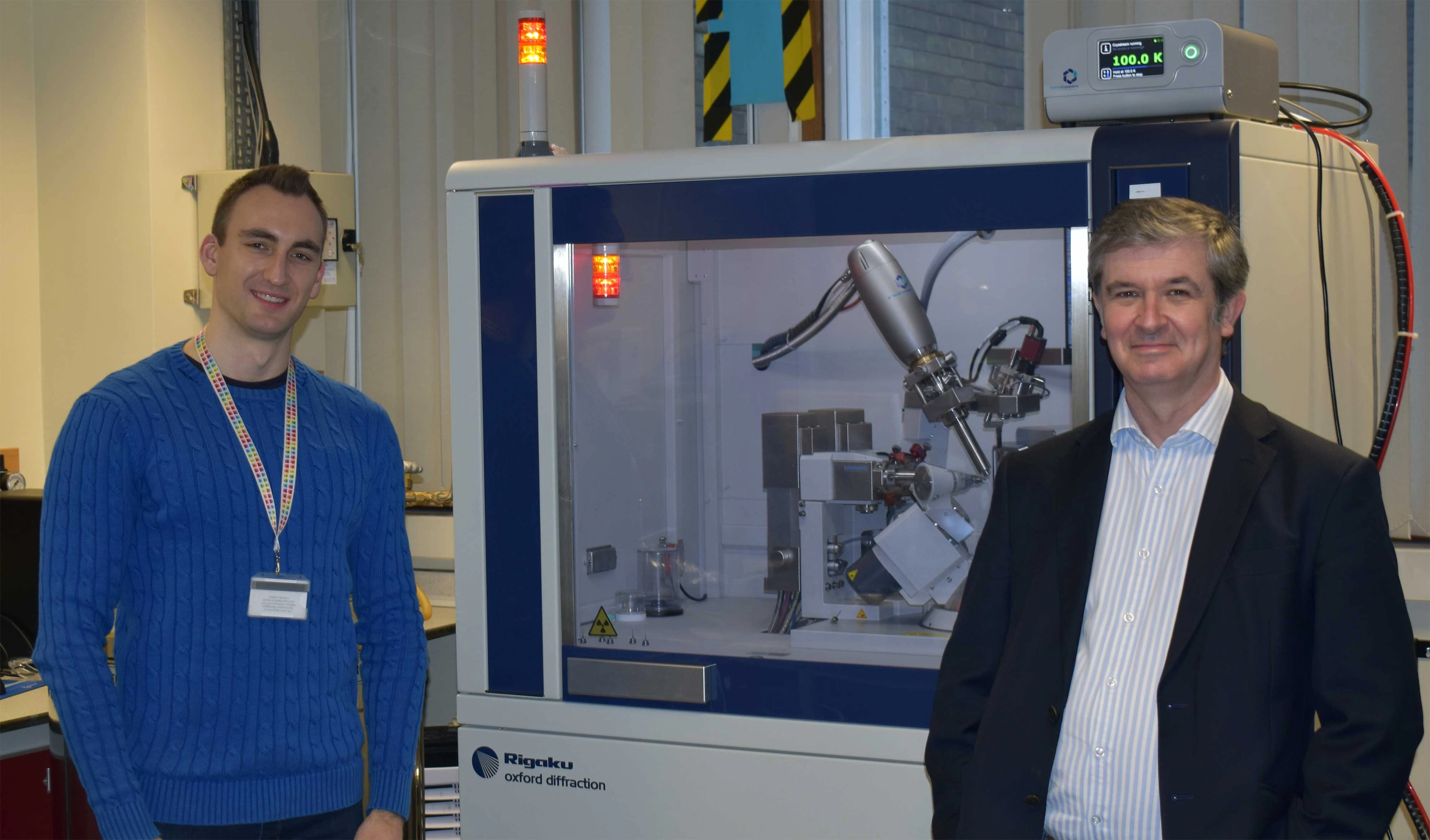First Crystallographic Structures Determined Using Rigaku’s Recently Launched Electron Diffractometer Published in Nature Communications
Electron diffraction (ED) is an emerging technique for determining crystallographic structures of single crystals. Rigaku recently launched the world’s first turnkey electron diffractometer in the form of the XtaLAB Synergy-ED. Researchers from the University of Birmingham and the University of Nottingham have published the first crystal structures determined by the XtaLAB Synergy-ED in the-high profile journal Nature Communications on January 20, 2022.
 The XtaLAB Synergy-ED is the culmination of close collaboration
between Japanese scientific instrument manufacturers Rigaku and JEOL. The system
benefits from Rigaku’s high-speed, high-sensitivity direct electron detector
(HyPix-ED), state-of-the-art instrument control and single crystal analysis
software platform (CrysAlisPro for ED) and JEOL’s electron microscopy
expertise. The XtaLAB Synergy-ED complements Rigaku’s existing range of single
crystal X-ray diffractometers (SC-XRD) in that it can analyze nanoscale samples
that are too small for conventional diffractometers.
The XtaLAB Synergy-ED is the culmination of close collaboration
between Japanese scientific instrument manufacturers Rigaku and JEOL. The system
benefits from Rigaku’s high-speed, high-sensitivity direct electron detector
(HyPix-ED), state-of-the-art instrument control and single crystal analysis
software platform (CrysAlisPro for ED) and JEOL’s electron microscopy
expertise. The XtaLAB Synergy-ED complements Rigaku’s existing range of single
crystal X-ray diffractometers (SC-XRD) in that it can analyze nanoscale samples
that are too small for conventional diffractometers.
The research team, led by Professor Neil Champness, attempted to use more conventional SC-XRD on a synchrotron beamline. Poorly diffracting crystals meant structure determination was extremely difficult, resulting in poor quality structure refinement, and they were unable to locate or identify anions in the structure.
This led them to explore alternative methods such as electron diffraction. The researchers examined 10 crystallites approximately 100 nm thick. In a world first, they successfully determined the structure of a heterorotaxane by merging 9 datasets. The use of multiple datasets gave rise to a higher-quality refinement, which even allowed identification and refinement of the anions.
When asked about this research project, Prof. Champness said, “Our study focused on studying photochemical processes in interlocked molecules known as rotaxanes. Interpretation of the results requires an understanding of the precise structure and organization of the molecular components, and the best techniques to achieve this are diffraction-based crystallography.”
“We are experienced X-ray crystallographers and use our own Rigaku XtaLAB Synergy-S X-ray diffractometer as well as synchrotron X-ray sources. For the compound in this study, we collected X-ray data, but it wasn't of a sufficient quality to determine a reliable structure of the molecule and then Rigaku stepped in with their new XtaLAB Synergy-ED. Much to our surprise the electron diffraction experiment gave better quality data for our crystals than even the synchrotron X-ray. We were very pleased that electron diffraction gave such good data for such a complex molecule, and this allowed a much greater appreciation of the chemistry that we are studying.”
Dr. Mark Benson, General Manager of Global Sales and Marketing for Single Crystal, also commented, “Shortly after launching the XtaLAB Synergy-ED, we were keen to test its performance on a rotaxane, which are known to be notoriously difficult to crystallize. The XtaLAB Synergy-ED passed with flying colors, successful resolving the structure of the difficult rotaxane crystals.
 “This
is a very proud occasion for the Rigaku team, to see our data published in the
prestigious Nature Communications journal along with our long-time
customer Professor Champness. This paper also highlights the value of the XtaLAB
Synergy-ED to excel where XRD falls short; e.g., where sample volumes are
extremely small or where crystals are too small for home X-ray or even
synchrotron diffraction. Furthermore, it demonstrates how electron diffraction
is set to revolutionize structural studies. We at Rigaku are excited to be at
the forefront of this new development.”
“This
is a very proud occasion for the Rigaku team, to see our data published in the
prestigious Nature Communications journal along with our long-time
customer Professor Champness. This paper also highlights the value of the XtaLAB
Synergy-ED to excel where XRD falls short; e.g., where sample volumes are
extremely small or where crystals are too small for home X-ray or even
synchrotron diffraction. Furthermore, it demonstrates how electron diffraction
is set to revolutionize structural studies. We at Rigaku are excited to be at
the forefront of this new development.”
For crystallographers like Prof. Champness and his team, who already use Rigaku XtaLAB Synergy series X-ray diffractometers, the transition from X-ray diffraction to electron diffraction is made incredibly simple as Rigaku use the same software across both platforms. CrysAlisPro software is common across entire XtaLAB Synergy range, providing measurement and analytical capabilities.
Read more about the structural determination using electron diffraction and characterisation of homo- and hetero-rotaxanes in the Nature Communications paper and the Rigaku XtaLAB Synergy-ED.










